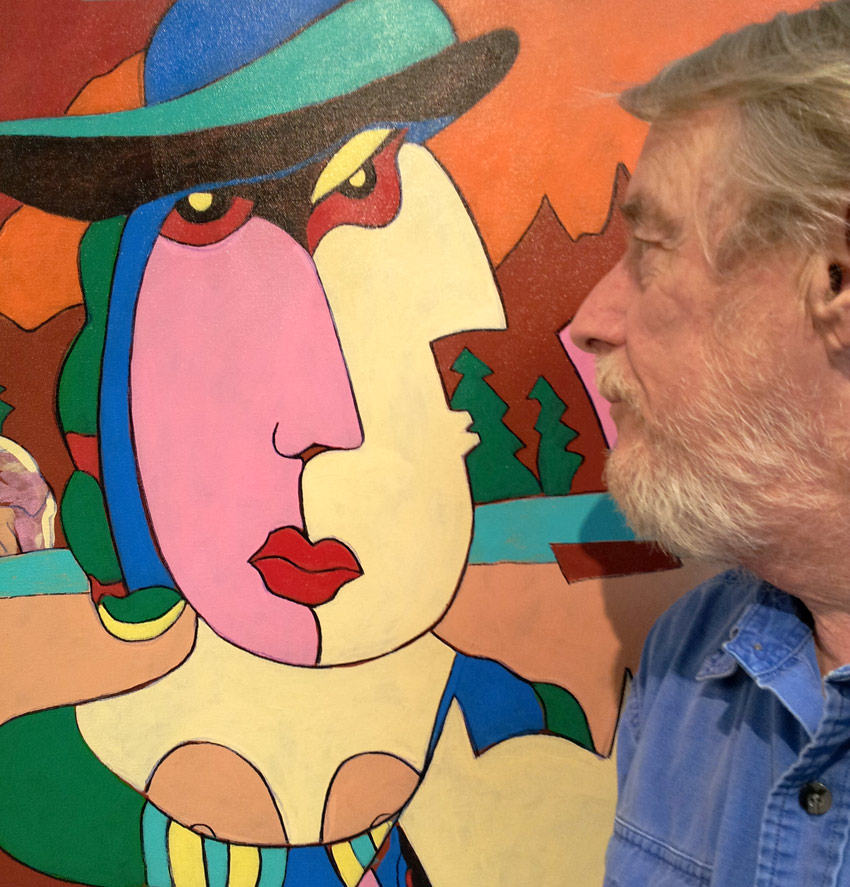The 2017 War … of Art
6 Part Art Series … by Maurice Cardinal … Part 5
The contemporary art world
is just as impacted by globalization
as all other industries.
How we navigate within it however, is unique.
Art buyers in the global community play in a luxurious world and with economic clout to make art purchases in the multimillion-dollar-and-up range. Your artist heart can rage against globalization all you want, but globalisation has spawned an innovative, albeit highly disruptive investment model that will change the landscape dramatically and give artists more opportunities. Hedge fund investment in the arts is here for as long as it generates profit. It won’t go away without legislation, and that could be a very long time coming if at all considering the overall lack of interest by politicians regarding art and culture. The only time bureaucrats have an interest is when they see a photo op.
It’s called the art business because it’s also about generating revenue so you can continue to make more art without having to juggle three part time jobs.
. . . . .
Opportunities are endless when the status quo/galleries are shaken up and you’re in a community of like minded artists and buyers with complementary styles and goals.
. . . . .
The art community is a friendly place for the most part, but during offer or bid stages it’s as highly competitive as a major league sports arena – we just smile more. When a collector discovers your work online, or at an art fair or gallery, your goal as an artist is to ensure that a comfortable portion of the buyer’s budget finds its way into your world so you can live to fight another day.
Make no mistake, art is war is art.
Like millions of pseudo starving artists, you can fool yourself into thinking your talent and conservative vision are so rare and sought after that buyers will find you through divine intervention simply because you know how to draw a clean circle, but if you think this way, you might want to keep your day jobs.
When large corporations like Red Bull / House of Art and Tiffany & Co get in the fine art market, it’s a good indication gatekeepers like galleries and curators are in an experimental phase and that major change is afoot across the industry.
The marriage of Andy Warhol and Absolute Vodka in the mid 80’s
started a POP Art trend that still lives strong today.
Red Bull is the new Absolut Vodka revisited.
Here’s a list of Corporations that supported the Arts in 2016
FineArtAmerica.com has a long list of digital art selling in the $30 to $1,000 range.
Social Media is radically changing the Contemporary Art Gallery model
250+ Places to Sell Art Online
////////////////////////////
Is the Traditional Art Gallery Dead?
No, but it’s having a NDE and is gasping .
Here’s what 21 gallerists and curators think …
Galleries Should Act Like Luxury Brands to Survive the Internet
Are Mid-Size Galleries Disappearing, if so, Who’s To Blame?
The TECH World is Buying Art Online, of course they are …
How Tech has Transformed the World of Art Collecting.
The art market in early 2017 is volatile. Values for emerging midrange artists dropped considerably in 2016. According to Artsy, at a Phillips auction last September pieces by Christian Rosa and Hugh Scott-Douglas sold for thirty grand and twenty-two thousand five hundred respectively which was a surprise considering that in recent previous years their works sold in the six figure range. Also, a Lucie Stahl painting estimated to sell for six grand only attracted a bid of just over five hundred dollars. Auction totals dropped considerably for emerging artists.
At Frieze Week, Artsy reported that Phillips totals were down by almost half even though they “maintained 94% sell-through rate by value”. Auction houses reacted by adding more blue chip material and trimming midline artists.
The following paragraph from an Artsy article is painfully cautious …“The art world’s resistance to change may be due, in part, to a reluctance of powerful art professionals to divulge their insights. While working on the original version of Art/Work, Bhandari was surprised to find that some people turned down interviews because “they didn’t want to demystify the art world. They liked the power dynamic the way it was,” she recalls. “They said, ‘I don’t want artists to have that information that changes my relationship with them. I like it the way it is.’”
Writer Abigail Cain, also quoted Bhandari and Melber saying “resistance to change may be due, in part, to a reluctance of powerful art professionals to divulge their insights“.
Without a doubt it is why, and mostly why galleries took such a long time to embrace social media. They don’t want to reveal their sales process and strategies.
Galleries have highly detailed sales history reports of their clients and families, information they use during presales and negotiations. When the sales process moves online, the information remains the same, but the face to face relationship is lost. A well designed web presence makes up for the loss of personalisation by asking questions and tracking prospects as they navigate the site.
When Simon Cowell launched American Idol the music industry went ballistic because Cowell made it obvious to everyone that there is an overabundance of great talent in the world, and that being talented does not guarantee success. The public soon learned that promotion not talent is the critical element. Almost overnight artists had to become “authentic” because talent alone couldn’t differentiate them from the pack. Not real authentic mind you, Hollywood authentic.
A very similar process is now evolving in the visual arts world.
As Yogi said (the Berra not the guru), “It’s déjà vu all over again!”
Read Part 6 …
Read the entire series – The 2017 War … of Art
Part 1 Part 2 Part 3 Part 4 Part 5 Part 6
.


For the first time ever last night, a musical artist won a Grammy Award without being signed to a record label. He did it all online. He gives his music away and makes money from merchandise and touring.
I get how this works for musicians, but how will it work for visual artists?
https://goo.gl/nCBrq5
https://news.fastcompany.com/chance-the-rappers-historic-grammy-win-should-worry-record-labels-4030590
Good question Andrea. Thanks for your note.
The sales model for musicians evolved when the method of distribution changed as a result of MP3. It was novel to be able to sell one song at a time instead of an entire album, which also radically changed how people listened to music. Sony perfected the single sale and we haven’t looked back.
Musicians at first thought all they had to do was deliver their song electronically and they would be make a bit of money, but in a couple of years the market was flooded with great music, and as the volume of music grew the value of each piece decreased. Musicians had to quickly find a different way to put value on their talent, and they did, largely through performance.
What they eventually discovered though is that the real value was in establishing a direct long term relationship with fans who liked their music. The also figured out that they might still never grow into a superstar arena style artist and make a killing at the box office or on iTunes, but they could now sell their work more incrementally for smaller amounts, which was absolutely impossible before. It’s the tortoise and the hare parable.
Visual artists can also more easily distribute copies/prints of their work through a long list of third party online art sales companies, and more importantly sell their ORIGINAL work too. It stands to reason that if someone buys a copy of your work for a modest amount, and if you maintain a relationship with them through social media, the odds are very good they might be enticed to one day buy an original.
There is an old sales motto, “It takes five times the energy and cost to FIND a NEW customer than it does to keep one.” It’s all about acquisition as opposed to retention. Once you find someone who likes your work, all you have to do is keep the conversation going and eventually they will purchase more of your product. Social media is the absolute perfect communication tool to keep an prospect engaged. Don’t think of it as a sales tool though. Think of it as a way to build rapport and a community.